THE MEETING SPACE ENVIRONMENT
THE MEETING ATMOSPHERE
Effective meeting spaces require thoughtful attention to the room environment. Elements like lighting, color, background furniture, and acoustics are critical in order to optimize meeting rooms for communication, collaboration, and productivity..
Lighting
LIGHTING
An evenly lit meeting space helps the camera capture the most accurate color, contrast, and video definition.
- Avoid pointing the camera toward exterior windows or other strong lighting sources, like directional spotlights; lighting elements that are behind meeting participants tend to darken the subject and produce silhouettes
- Bright sunlight from a nearby window can also create sharp contrasts, even when the camera isn’t pointed toward the window
- Where needed, consider installing blinds, curtains, or shades to control lighting
- Generally speaking, typical fluorescent office fixtures work well for meeting room lighting
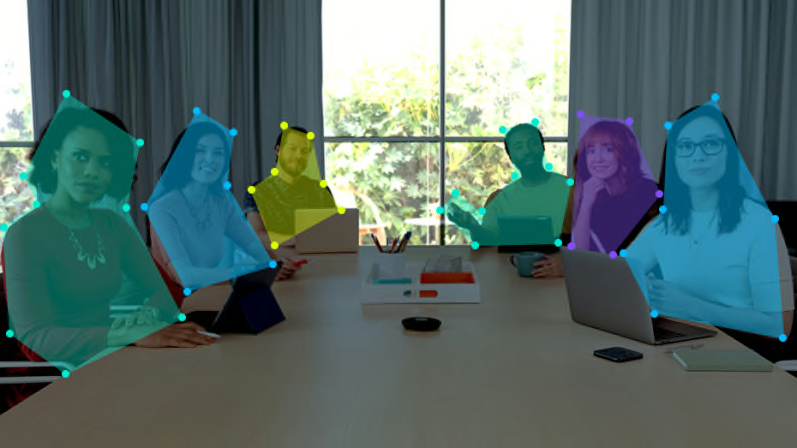
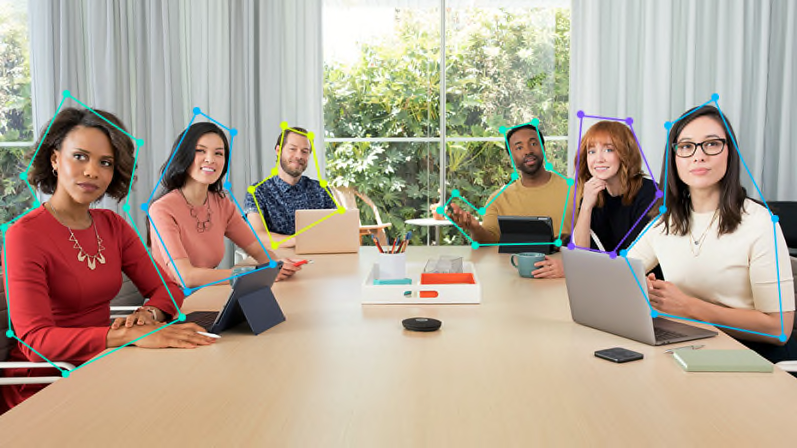
Positioning a subject between the camera and an exterior window or other harsh light source can cause an undesirable silhouette that degrades video quality. Logitech RightLight™ technology solves backlighting and other lighting challenges by optimizing light balance to emphasize faces and render natural-looking skin tones.
Color
COLOR
Neutral wall colors such as gray or beige usually provide the least distracting background, helping keep the focus on the attendees.
- Avoid bright colors such as pure red, blue, and green, which can cause the camera to skew flesh tones and other hues
- Avoid bold patterns in the background; cameras generally do not capture patterns well which leads to visual distractions
- If energizing the room with color is important for branding, display, or other purposes, use it sparingly and preferably on the wall behind the camera
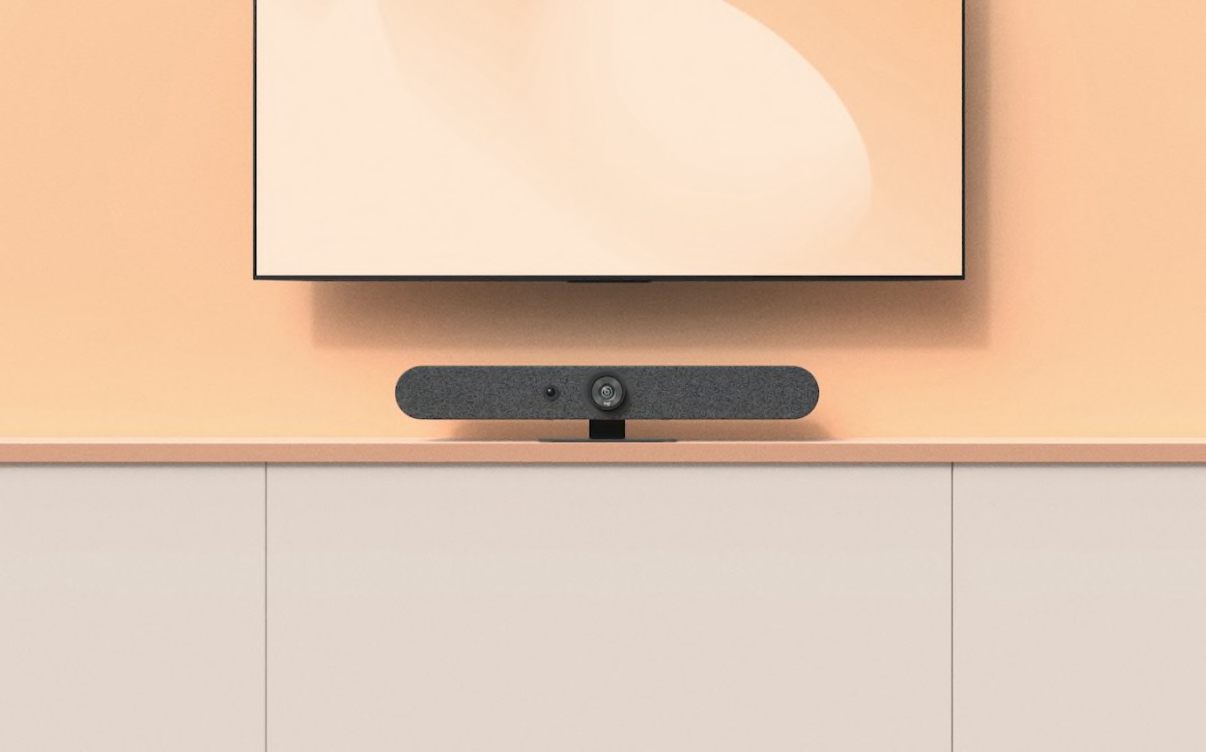
Background
BACKGROUND
A simple, clean background is usually best. Visual clutter, like bold patterns, can be a problem for the conference camera and distracting for meeting attendees.
- Remove or avoid unnecessary furniture, items on the table, ornate plants, busy artwork, framed prints with reflective glass, and moving objects like curtains in a draft
- Conceal wiring below tables whenever possible
- For rooms with windows, consider blinds or curtains, a privacy screen, or frosted glass; windows can be a source of distraction if there is movement or activity outside and pose a privacy issue for confidential meetings

Furniture
FURNITURE
The table size and number of chairs is a determining factor when selecting audio and visual equipment.
- Arrange chairs so the camera can see everyone at the table; this is usually accomplished by positioning the camera and screen at the head of the table and arranging arranging seating within the camera’s field of view (FOV)
- If possible, choose a non-rectangular shape for the table – such as a tapered or triangle shape or a semi-circle – with the widest end near the screen and camera so everyone seated at the table can be seen
- Circular tables can be a good choice for smaller rooms if they don’t block the camera’s line of sight.
- Select small high-top tables and light-weight moveable seating for flexible room configurations
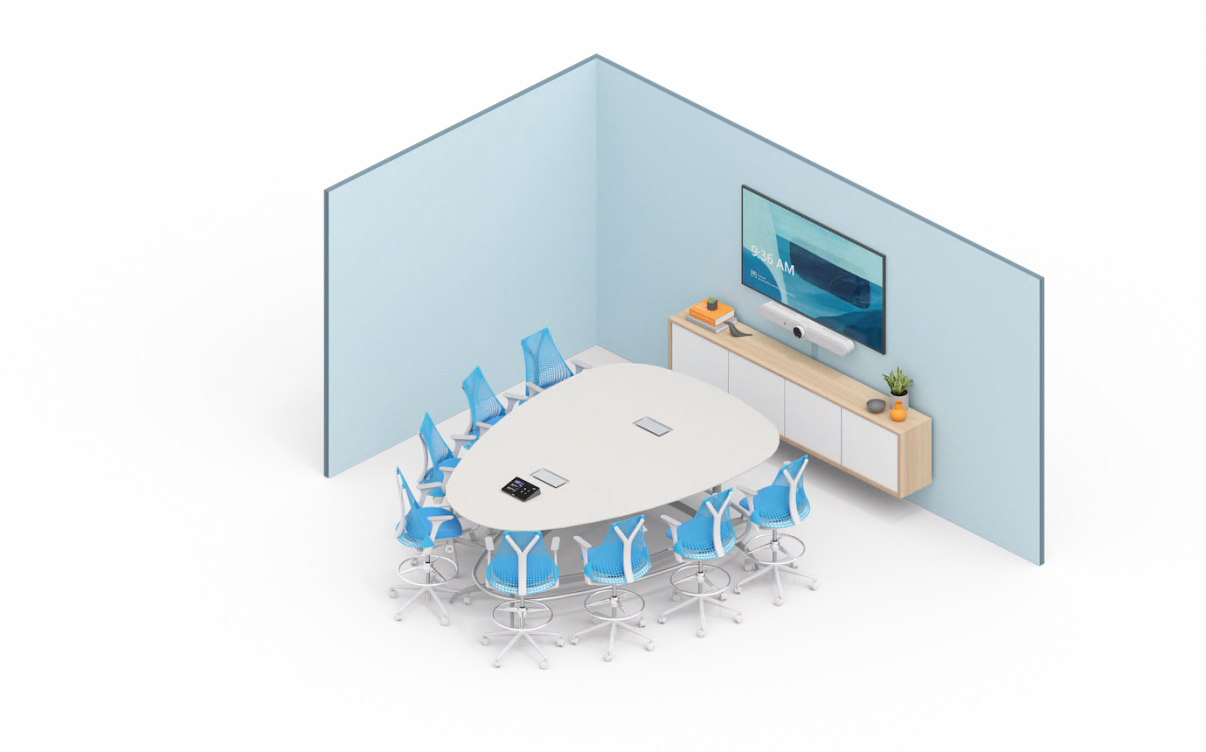
Acoustics
ACOUSTICS
Every physical space has intrinsic acoustic properties, many of which can be managed. Materials used for room construction and furniture have the most impact on room acoustics.
- Avoid building rooms with reflective surfaces such as metal, stone, glass, or similarly hard materials, which can increase sound reflection and compromise audio quality
- Be wary of glass windows, which can allow outside noise to leak in and cause distractions to people in the room and on the other side of the call
- Consider acoustic ceiling tiles or hanging panels, both of which absorb sound and reduce echo and reverb
- Use carpeting rather than tile or hardwood; softer and loftier materials absorb sound best
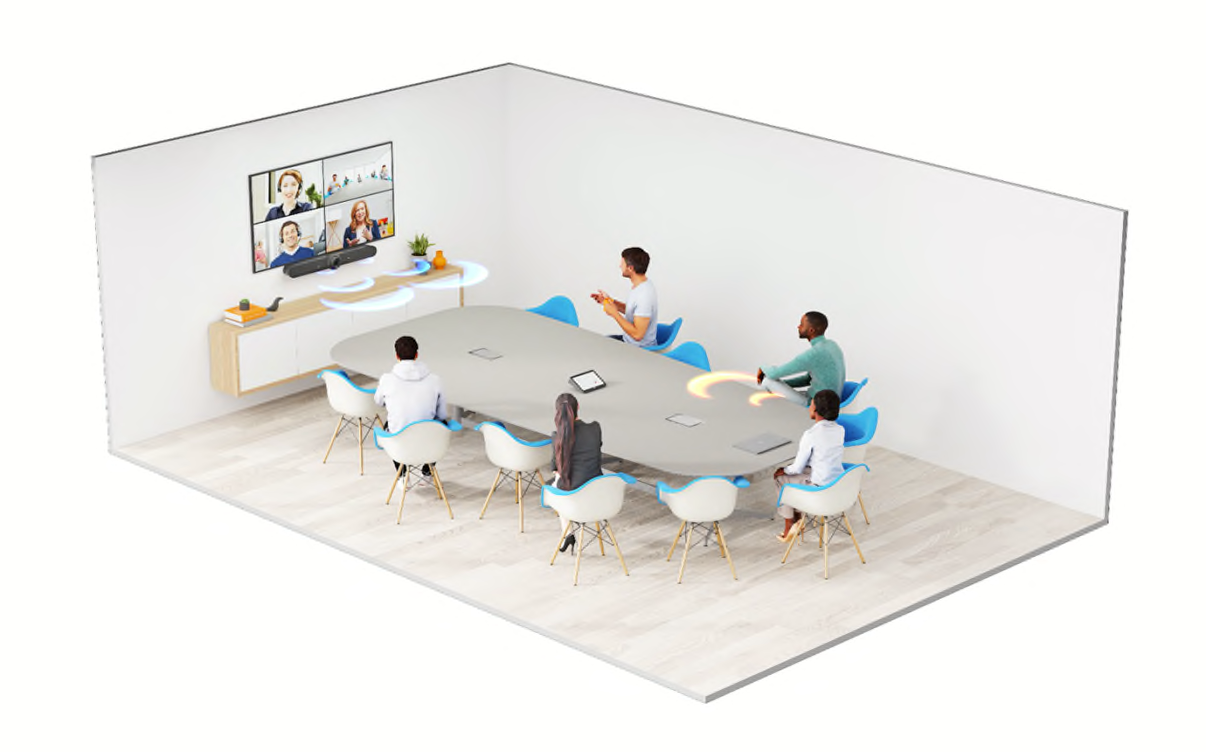
Browse Categories: